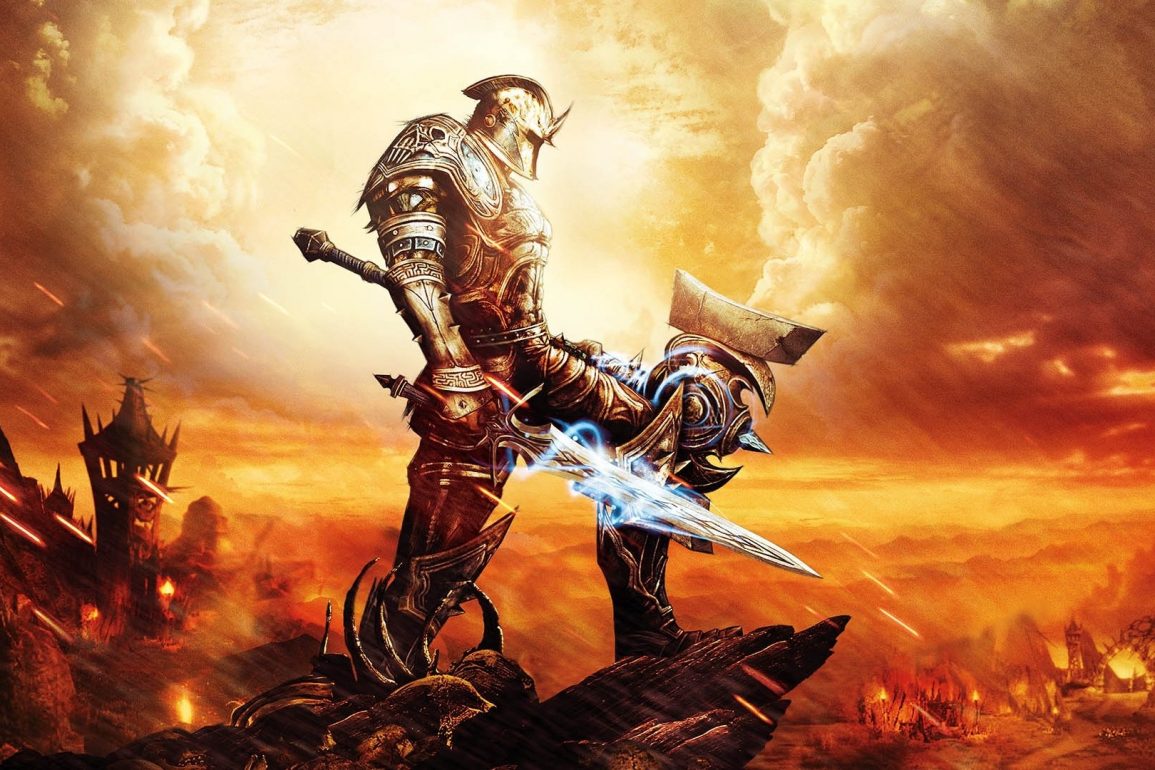Intended as a breakout title for developer 38 Studios, 2012’s Kingdoms of Amalur: Reckoning was a much-anticipated RPG in the build-up to its release. A chief factor in the game’s hype was the design team’s ‘supergroup’ status, composed of several industry luminaries. Ken Rolston of Elder Scrolls fame led the overall game design; comics legend Todd McFarlane (Spawn, Spider-Man) came up with the art direction; best-selling fantasy author R.A. Salvatore wrote the lore; and much-loved games composer Grant Kirkhope, known for his many collaborations with Rare, provided the game’s score.
Unfortunately, Kingdoms of Amalur failed to make much of an impact when it came out. Released in the shadow of Skyrim, it did not meet sales expectations, despite faring well with reviewers and garnering a small but passionate fan base. It’s a shame that this became the game’s legacy, because in spite of the drama surrounding its creation (the project was infamously bankrolled with a loan from the state of Rhode Island that the developer couldn’t pay off), it was actually one of the better action RPGs of the sixth generation, receiving especial praise for its refined combat and character progression systems.
A Double-Edged Sword…
THQ Nordic, which purchased the rights to the series in 2018, seem to agree, having now released the title in enhanced form as Kingdoms of Amalur: Re-Reckoning. Kingdoms of Amalur casts players as the Fateless One, a hero with the ability to change the outcome of their fate by will alone. In-game, this translates as the ability to pay a nominal fee to respec and switch character classes pretty much whenever you like. Called the Destiny system, this open-ended approach to character classes remains one of the game’s biggest draws. Three trees fitting into the archetypal fantasy triptych of warriors, rogues and mages are initially available upon completion of the game’s prologue. Depending on how you pump experience points into a character’s respective might, finesse and sorcery trees, you can unlock access to new abilities and advanced multi-classes, including a ‘Universalist’ class capable of dabbling in a bit of everything.
Putting points into sorcery unlocks spells, while finesse points can improve the character’s ability to sneak, poison and backstab enemies. Might points, as you might expect, unlock a wide variety of weapon attacks and other offensive and defensive traits. The experimentation afforded by ‘unbinding’ your fate and trying out new combinations lends the game a massive amount of replayability without the need to necessarily start from scratch with a new character. Kingdoms of Amalur’s combat is its second major strength; its real-time action battling was a revelation for open-world RPGs in 2012, and still holds up well today.
It plays a little bit like a mix between Fable and God of War, with face buttons allocated to primary and secondary weapon attacks and dodging. Returning from the original is the Reckoning bar, which fills up during combat and can be activated by holding the left and right triggers together to briefly slow enemies and buff the player’s damage, which is particularly handy when fighting bosses or large groups.
Effective use of weapons is dependent on your character’s specialisations, and includes the usual swords, staffs and bows, alongside more esoteric fare such as chakrams, faeblades and sceptres. The left trigger is used for blocking and parrying, while the right trigger can be held to access skills and spells via the face buttons. This mechanic has been subtly improved in Re-Reckoning, as players can now allocate up to eight face button skills (vs. the original’s four) by switching up sets with L1/LB while holding the right trigger, a welcome change that reduces the need to pause the game.
The other major gameplay change is how the game deals with area levelling. In the original version of Kingdoms of Amalur, zones were level locked, which could lead to situations where characters would become too powerful as the game progressed. Removing this lock does a lot to improve the game’s overall balance. Other additions include an improved loot system (you can expect drops to be less random), a Very Hard difficulty mode, and quality-of-life improvements such as a field of view slider.
Thy Kingdom Come…
Despite the involvement of R.A Salvatore, Kingdoms of Amalur’s storytelling has never really clicked for me, though there’s lots of lore here for enthusiasts to invest in. The story involves the Fateless One’s death and resurrection at the hands of a gnomish device called the Well of Souls, and the subsequent journey to unravel their past and overthrow the Tuatha Deohn, an evil faction of Alfar (read elves) led by the genocidal Gadflow. It’s not the worst story ever, but the narrative is sometimes obfuscated by Salvatore’s known predilection for Proper Nouns, many of which are plundered from the obscure recesses of Celtic and Norse mythology.
The game’s graphical upgrades also leave something to be desired. Compared to the PS3 and Xbox 360 releases, Kingdoms of Amalur: Re-Reckoning looks pretty nice; textures have seen an overhaul, lighting is improved, and it runs at 60fps with rare dips on PS4 Pro at up to 4K resolution. These upgrades become much less noticeable when compared with the PC version of the original game, however. Kingdoms of Amalur’s somewhat cartoonish art style has helped the visuals age fairly well, and McFarlane’s monster designs look great, but details such as hair, faces and stiff animations during cutscenes do not match up to a modern title.
There are a couple of other disappointing issues that really should have been fixed on console. The first is the pop-in. The original version of Kingdoms of Amalur always had some LOD issues even on decent gaming PCs, but it’s disappointing that objects — particularly flora — still appear sometimes just a few metres ahead of the player character in Re-Reckoning. The second, more annoying problem in Re-Reckoning is the amount of loading the game has. It loads every time the player fast travels, or moves between an indoor and outdoor environment. This was fairly common for open-world games of the time, but the load times are irritatingly long on console, commonly exceeding 30 to 40 seconds every time the player transitions between two areas. Hopefully, this can be rectified with a patch at some point, but for now it’s a stark reminder that the new generation of SSD-enabled consoles can’t come soon enough.
If you’ve played Kingdoms of Amalur before, it is largely the same game you’ll remember. The package includes every DLC released for the game, including its two expansions, The Legend of Dead Kel and Teeth of Naros, so there’s a wealth of content on offer. Intriguingly, THQ Nordic has also announced that a brand-new expansion called Fatesworn will be released for the game sometime in 2021. Kingdoms of Amalur: Re-Reckoning comes recommended to anyone who has never played it before. For those who experienced the original game on PC however, it’s probably best to temper expectations, as the main draws here are a few welcome gameplay improvements and the promise offered by next year’s new content.
Kingdoms of Amalur: Re-Reckoning
Kingdoms of Amalur: Reckoning is a 2012 action role-playing video game for Microsoft Windows, PlayStation 3 and Xbox 360 developed by Big Huge Games and 38 Studios, who also published the game with Electronic Arts.

AVAILABLE NOW ON:
.

